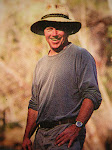It’s a strange reality that the wildest and least accessible part of many rivers is their mouth. That’s certainly the case with Ocklawaha and Suwannee—the two rivers we’ll be paddling this weekend.
In earlier times it was not the mouths but the headwaters of certain rivers that stood among the world’s great mysteries. Fantastic myths and legends were often associated with these unknown realms and the expeditions sent to find them would become the stuff of legend—think Stanley and Livingston’s search for the source of the Nile and the explorations of Orellana, Humboldt and others of the Amazon.
Closer to home, it was the St. Johns River that defied understanding. When the Bartrams arrived in 1765 to give an accounting of Florida’s flora and fauna, the Governor of the newly acquired British colony asked if they would add a little side-trip to their expedition; If it’s not too much trouble, could you please find the head of the St. Johns?
It was just the latest in series of such expeditions, stretching back to the very founding of St. Augustine in 1565. Pedro Menedez, like many who followed, believed (and hoped) that the head of the St. Johns connected to the head of some other river that flowed westward and into the Gulf. His attempt to prove his theory was thwarted by the natives south of Lake George, but his dream lived on. For the next two centuries, every nation that controlled Florida hoped (and tried) to find a natural, cross-Florida water route. And when it was finally learned that a natural crossing did not exist, people started kicking around the idea of creating one. In the end, Menendez’ dream proved to be the seed of an idea that sprouted 400 years later as the Cross Florida Barge Canal. But that’s another story.
Today, with Florida’s rivers thoroughly mapped and their high flanks settled, it is often their mouths that remain as their wildest and least accessible parts. These areas are characterized by low wetlands where the ground is too soggy to build and the much of the river water threads through braided networks of back channels. Paddlers have a name for such places: Paradise!
Early explorers looked into the mouths of unknown rivers with trepidation, rivers like the Ocklawaha. Long after the middle St. Johns had become a known entity, the mouth of Ocklawaha represented a brooding mystery. For 17th century Spaniards, the Ocklawaha was known as the Rinconada, “the hidden or unknown corner.”
Across the Peninsula, the mouth of Suwannee River—the area we’ll be paddling this Sunday—is that river’s wildest section. Here again, the same maze of backchannels that make it a paddler’s paradise today made it a forbidding no-mans-land for earlier Floridians.
In 1821, two men were tasked with selecting a site for the new Territorial capital. One of them was convinced the high, fertile lands along the Middle Suwannee were perfect. But when they sailed from St. Marks, across the Gulf to explore this promising land, the boats captain couldn’t find the river’s mouth. The vast swamplands and multiple channels hid the entrance. Finally, after trying a few wrong rivers, they gave up and returned to St. Marks. With time running short, they went up the St. Marks River and chose a suitable spot—an abandoned Indian village site called Tallahassee.
Even as late as the 1890’s the mouth of Suwannee was considered deep wilderness when the Brewster/Chapman Expedition arrived. No surprise, they saw (and shot) some of the last ivory-billed woodpeckers in these swamps.
Today, like the vast wetlands heading the St. Johns and the still-wild corners of the Rinconada, the quiet, shaded backwaters embracing the mouth of Suwannee River remain the undisputed realm of many wild species—and the occasional paddler.

1 comment:
Enjoyed the blog Lars keep it coming...
Post a Comment